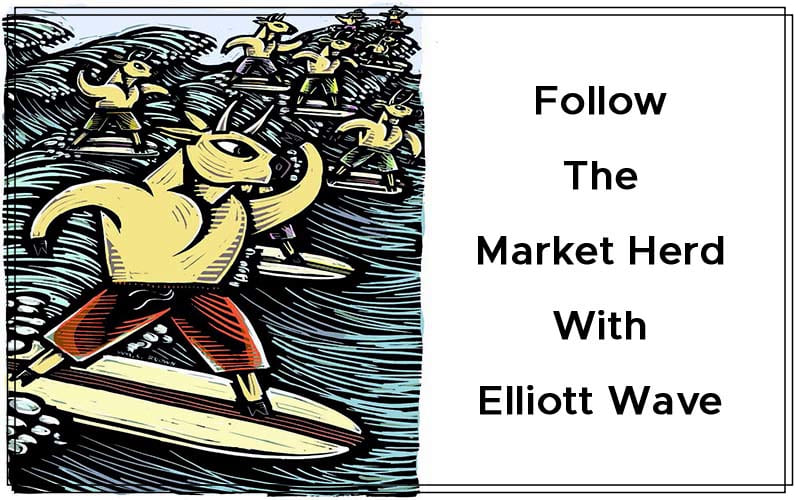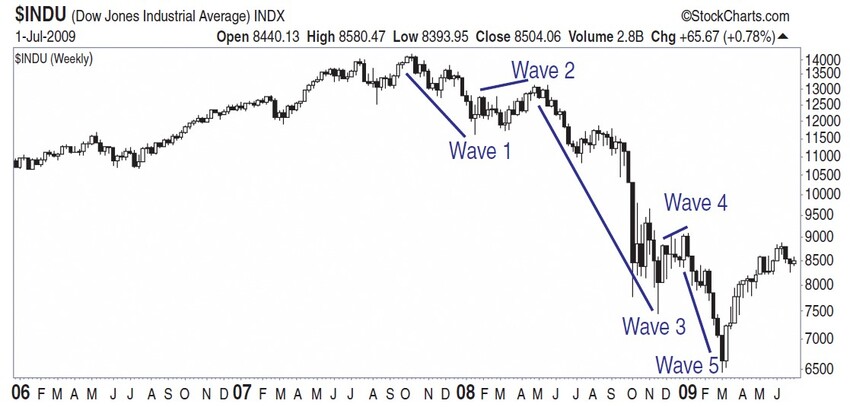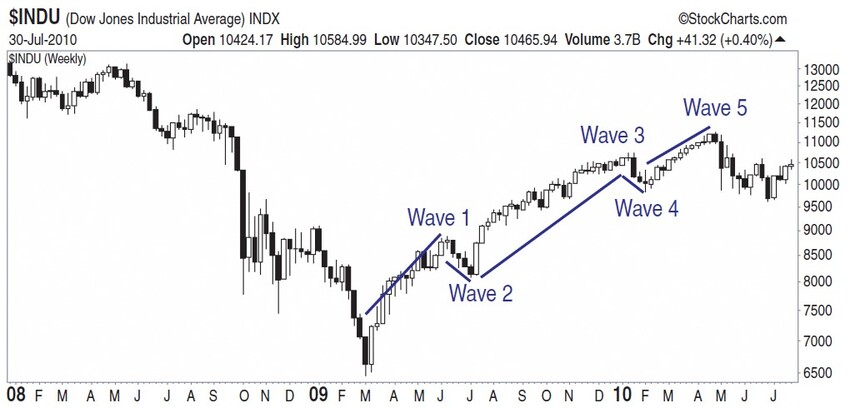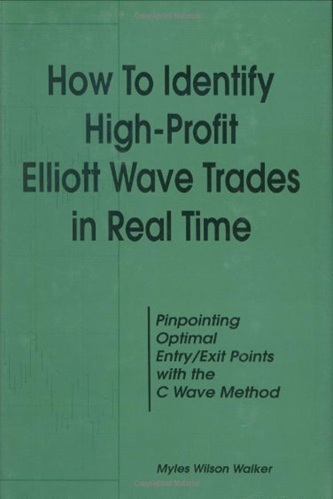Articles
Follow The Market Herd With Elliott Wave By Ryan Henry

If we can figure out what happened in the past, we can figure out what could happen in the future. Does this sound familiar? You spend countless hours analyzing a company’s financial strength, market position, and industry potential. You decide that everything is on the up and up, and that the company deserves a place in your investment portfolio. You buy the stock, waiting for your payday — and then watch in horror as the stock does the same thing that the stocks of its lesser competitors are doing. If you’re like most traders, this is a common scenario. It’s true that financially strong stocks in leading industries have the potential to be great investments. But unless the overall market is enjoying gains, most stocks won’t.
Of course, there’s an outside chance you’ll uncover a stock that is going to explode regardless of what the market is doing. But there’s also an outside chance you’ll find a briefcase full of money. It might happen, but in both instances, it’s not something you should bank on. The real key to successful investing is determining the direction of the market current and swimming in that direction. The majority of stocks will move with the market, so if we can figure out where the market is headed, finding winning stock investments becomes easier.
WHICH WAY IS THE MARKET GOING?
Determining market direction is more than chasing economic headlines. Even if those headlines drove market direction, chances are slim that we lowly individual investors would be able to gain an edge on the people who do this 24 hours a day and with much better connections. Fortunately, market direction is not a function of the newswire; much greater forces are at work. The stock market, like anything else that involves millions upon millions of people, is subject to a herd mentality. You’ve most likely read that you don’t want to be a part of the herd when it comes to investing because the herd is usually wrong. That may be true, but that statement misses the real value in understanding herd behavior.
The real value lies in the fact that herd behavior is predictable. Herds repeat the same behavior over and over again. Like human nature itself, the way herds behave cannot be changed. That is exceptionally valuable information when it comes to investing in the stock market, so much so that we can use it to classify where the stock market has been, and also to determine where it is going.

FIGURE 1: FIVE-WAVE DECLINE. The Dow Jones Industrial Average followed a textbook five-wave Elliott wave pattern during the 2007–09 bear market decline.
ELLIOTT WAVES
The Elliott wave theory is based on tracking the predictable movements of herd behavior to determine where the overall market is headed. It’s a progression that repeats itself, so if we can determine what has happened in the past, we can determine what the future may hold. Let’s look at the anatomy of a new downtrend to illustrate how the predictable herd behavior plays out. It starts with the completion of an uptrend and a small decline that only a few investors take seriously. This initial move is wave 1. The underlying momentum has changed, but this is the last thing on most investors’ minds since the rosy times of the uptrend are still fresh in their minds.
Once the initial decline runs out of gas, a small advance appears that we’ll call wave 2. This advance has most investors thinking that the uptrend has resumed and the recent decline was only there to refuel the uptrend. This creates the ideal environment for the new downtrend to pick up steam. The small rally fades, ushering in the heart of the market descent. This is wave 3. A big down move takes place, and it grabs the herd’s attention. This is when most investors take notice and behave accordingly. This only adds fuel to the fire as market participants go about shorting or selling into the growing downtrend.
Suggested Books and Courses About Elliott Waves Method
Elliott Wave International Educational Series (Volumes 1 – 10) By Robert Prechter
Original price was: $1,168.00.$66.12Current price is: $66.12.After this phase is exhausted, the market offers a reprieve with a recovery effort. A small number of investors believe that the decline has run its course, and the recovery will be created by their buying efforts. This recovery is wave 4. Unfortunately for these buyers, momentum is still down and the recovery proves temporary.
The decline resumes, allowing the slowpokes who missed the last down leg to get involved. This final phase of the decline is wave 5. It continues only as long as new participants are willing to get involved in what is now a well-established downtrend.

FIGURE 2: FIVE-WAVE ADVANCE. The 2009–10 advance also followed a very clear five-wave progression.
Most investors believe that the downtrend will continue, leading to a very high level of bearish sentiment. The move has exhausted itself. The early arrivals are already invested, as are the trend riders and latecomers. Absent any new participants, the downtrend finishes and a new uptrend begins, following the exact same progression.
Why does this progression keep repeating? Because it’s human nature. The headlines change, monetary policy changes, most things change; human nature, however, does not. The Elliott wave theory is based on determining the market’s location within this ever-repeating five-phase pattern. If that can be determined, then we will know exactly where the market is headed.
This is more than just some theoretical mumbo-jumbo. Look at a chart of the 2007 to 2009 decline in the Dow Jones Industrial Average (DJIA) in Figure 1 to see how this five-wave progression looks in the real world. The progression of herd behavior is the same in market uptrends as well (Figure 2). We only have to look at the most recent market uptrend for verification.
FOLLOW THE HERD
The market adage “Beware the stock market herd” may have the right intentions, but it misses the point. By identifying the repetitive and predictable behaviors of a herd, we can determine where the stock market is headed. This, in turn, allows us to make the timeliest of investments.
Ryan Henry is the author and an investment analysis firm with a profitable eight-year track record. Wavespeak provides market index forecasting and stock trade recommendations through a newsletter that is published three times a week. Wavespeak’s analysis is driven by Elliott wave theory, but also includes consideration for Fibonacci mathematics, intermarket relationships, breadth, volume, and money flow analysis. Wavespeak provides samples of current market forecasts on its website.




